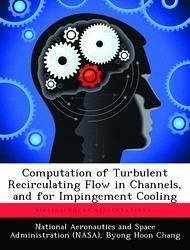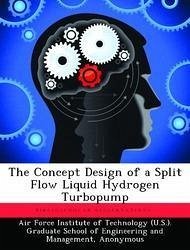
Computation of Turbulent Recirculating Flow in Channels, and for Impingement Cooling
Versandkostenfrei!
Versandfertig in über 4 Wochen
52,99 €
inkl. MwSt.

PAYBACK Punkte
26 °P sammeln!
Fully elliptic forms of the transport equations have been solved numerically for two flow configurations. The first is turbulent flow in a channel with transverse rectangular ribs, and the second is impingement cooling of a plane surface. Both flows are relevant to proposed designs for active cooling of hypersonic vehicles using supercritical hydrogen as the coolant. Flow downstream of an abrupt pipe expansion and of a backward-facing step were also solved with various near-wall turbulence models as benchmark problems. A simple form of periodicity boundary condition was used for the channel fl...
Fully elliptic forms of the transport equations have been solved numerically for two flow configurations. The first is turbulent flow in a channel with transverse rectangular ribs, and the second is impingement cooling of a plane surface. Both flows are relevant to proposed designs for active cooling of hypersonic vehicles using supercritical hydrogen as the coolant. Flow downstream of an abrupt pipe expansion and of a backward-facing step were also solved with various near-wall turbulence models as benchmark problems. A simple form of periodicity boundary condition was used for the channel flow with transverse rectangular ribs. The effects of various parameters on heat transfer in channel flow with transverse ribs and in impingement cooling were investigated using the Yap modified Jones and Launder low Reynolds number k-epsilon turbulence model. For the channel flow, predictions were in adequate agreement with experiment for constant property flow, with the results for friction superior to those for heat transfer. For impingement cooling, the agreement with experiment was generally good, but the results suggest that improved modelling of the dissipation rate of turbulence kinetic energy is required in order to obtain improved heat transfer prediction, especially near the stagnation point. The k-epsilon turbulence model was used to predict the mean flow and heat transfer for constant and variable property flows. The effect of variable properties for channel flow was investigated using the same turbulence model, but comparison with experiment yielded no clear conclusions. Also, the wall function method was modified for use in the variable properties flow with a non-adiabatic surface, and an empirical model is suggested to correctly account for the behavior of the viscous sublayer with heating.














